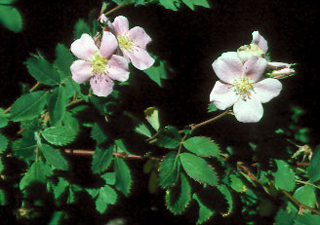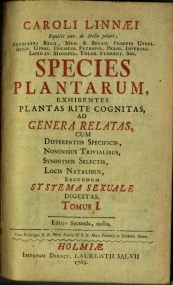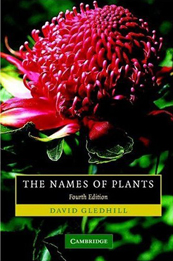Human Flower Project
Plant Names as Portals to Knowledge
Much as we love the imagery of “baby’s breath,” now we’re determined to call it Gypsophila paniculata, too. James Wandersee and Renee Clary provide a friendly guide to botanical names and a rationale for using them. Thank you so much, Jim and Renee. For us and for others who write about plants, it’s bookmark time.
By James H. Wandersee and Renee M. Clary
EarthScholars™ Research Group
Think of a plant’s name as a key, one that unlocks the gate to the accumulated human knowledge about that tree or flower. A particular rose seen in the open forest may smell as sweet no matter what we call it, but if you want to move beyond appreciating its fragrance to finding out more about that flower, you need to know that its favored common name is the Woods’ rose (named after Joseph Woods) and its botanical name is Rosa woodsii Lindl.

Woods’ rose (Rosa woodsii Lindl. )
Photo: Utah State University
When you were young, you no doubt learned via social interaction, and without much conscious effort, to identify some of the plants that surrounded you. But the names that you learned were common names—rose, tulip, grass, lily, clover, corn, snapdragon, evergreen tree. Indeed, all of us began our exploration of the Plant Kingdom by learning the vernacular (common) names of plants. As long as we were communicating with people within our immediate surroundings, those names sufficed.
However, as a reader of the Human Flower Project, you are exposed to plants from other regions, cultures, nations, and continents. Because of those four variables, it is possible for a single plant to have hundreds of different common names, which can thwart effective communication and hinder understanding of the world’s plant life (flora). The Woods’ rose, for example, is also known as the western wild rose or the mountain rose or the fragrant rose, depending upon where you live in the US.
While the plethora of common plant names may be fascinating to linguists, folklorists, and anthropologists, it is utterly frustrating for those of us interested in the free global exchange of plant information in the 21st century. Happily, there are two accepted systems for the unambiguous and accurate naming of wild and human-selected and propagated plants, worldwide—one for botanical names (International Code of Botanical Nomenclature) and one for cultivated plants (International Code of Nomenclature for Cultivated Plants). Here we shall focus on the former.
Systems for assigning unique and concise names to plants date back to 1753 when the Swedish botanist Carolus Linnaeus (formerly, Carl von Linne) assigned two-part Latin names to all the known plant species, in his 1753 book, Species Plantarum.
 1762 edition of Species Plantarum
1762 edition of Species Plantarum
Photo: NC State University Library
It can take a lifetime to learn all the nuances of botanical naming (and there are important exceptions to some rules), but here are a few key elements of naming plants today.
• Besides having a common name(s), every plant has been assigned a two-part botanical name known as its species name. For example, the date palm’s botanical species name is Phoenix dactylifera L. Botanical names are always italicized in print or underlined in handwriting. Example: Phoenix dactylifera L.
• The first part of the species name is called the generic name (or genus name). Its first letter is always capitalized, such as in Phoenix. By the way, the plural of “genus” is “genera.”
• The second part of the species name is called the plant’s specific epithet, such as dactylifera. The first letter of the specific epithet is always typed in lowercase, even if it is derived from a proper noun like America, such as in Fraxinus americana (white ash). The species names of all plants have two parts like this (There is no Cher, Madonna, or Prince in the botanical world.)
• There may or may not be an abbreviation following the species name. The L. after the species name of the date palm (Phoenix dactylifera L.) signals that the authority for their names (i.e., their namer) was the famous Swedish botanist, Linnaeus. Such authority abbreviations are not to be italicized. If there are two authoritative abbreviations following the species name, the first represents the original namer, and the second is the person responsible for the plant’s current name.

Date Palm (Phoenix dactylifera L.)
Photo: Egyptian Palm Trees
• In the case of the date palm, Phoenix dactylifera L., its generic name was already used by Theophrastus (the father of botany, c. 300 BCE) and comes from phoenix = Phoenician, because the Phoenicians were credited with spreading these plants throughout the Mediterranean region. Its specific epithet is an amalgam of dactylus = date, and fero = “I bear”, that is, “date-bearing.”
• No two plants can have the same botanical name, although you may see the same specific epithets reused for different genus names. For example Syringa vulgaris is common lilac and Phaseolus vulgaris L. the common bush bean.
• The word species is both singular and plural. “Prance and Beenjie (2000) estimated that there are 320,000 plant species” (plural), and “Ornamental plants marketed under the name European wand loosestrife and purple loosestrife are in fact members of the same species” (singular).
• When you use a botanical name repeatedly in the same article, type the full botanical name the first time it appears; thereafter, you can use only the capitalized first letter of the generic name plus a period in place of the entire generic name and omit the authority. Thus Rosa woodsii Lindl., once introduced, becomes R. woodsii in subsequent usages. If you want to refer to several species of roses, you can simply type Rosa spp.
• Species names sometimes have varietal, subspecific or forma epithets that indicate a particular botanical subcategory. Example: Mentha spicata L. var. viridis (which is the ‘Ganga’ mint plant). The epithets themselves are italicized, but the abbreviations “var.” or “subsp.” or “f.” never are.
• Plant species names may be changed over time to reflect increased scientific understanding, so always make sure you are using the currently accepted botanical name when searching for information. Be forewarned, too, that the botanical names (if present) on the labels of commercially marketed plants are often inaccurate.
 • A major problem with using common names is that most of the world’s plants either have no common name or they don’t have equivalent names in other languages.
• A major problem with using common names is that most of the world’s plants either have no common name or they don’t have equivalent names in other languages.
• While plant people often balk at using botanical names because they are Latinized, long, and polysyllabic, they probably already use some botanical names as common names—like fuchsia, chrysanthemum, aster, palm, and rhododendron.
• A cautionary note: The naming of (a) hybrids resulting from the crossing of two species; (b) cultivated plant varieties (cultivars); (c) plants registered under Plant Breeders Rights; (d) trademarked plants; and (e) especially, cultivated orchids, follows more complex rules. These matters are beyond the scope of this article.
• A good way to further your knowledge of plant naming is to consult the 4th edition of The Names of Plants by David Gledhill (Cambridge University Press, 2007).
Finally, there are many plant species that once lived on Earth that are no longer alive today. Fossils can provide us with a glimpse of some of these extinct plants. There must have been millions of plant species that existed throughout the Earth’s history that are now extinct. Kaspar Maria (Count) von Sternberg of Bohemia (c. 1818) was the first paleobotanist (fossil plant scientist) and the standard authority abbreviation “Sternb.” is still applied to fossil plant species that he described and named.
Naming fossil plants is an investigative challenge because fossils of entire plants are rarely found. Plants naturally break into pieces while they are alive and fragment even more during fossilization. Not all plants in a given plant community are equally likely to be included in the fossil record, either. Just as animals with hard parts such as shells or bones tend to be better preserved in the fossil record, fossilization processes also favor large or woody plants that have more resistant tissues, over small herbs. (The botanical definition of an “herb” is a seed-producing annual, biennial, or perennial plant that does not develop persistent woody tissue but dies down at the end of a growing season—which differs from the definition used by herbalists.)

One of the largest plant fossils ever found
Scale tree (12 ft. x 13 ft.) from Pella, Iowa
Photo: National Museum of Natural History
Genus names are often applied without species identification when scientists are uncertain about the species name of a plant fossil. The Kentucky Geological Survey notes that “Paleontologists classify and identify fossils based on their shapes. “ Comparison with existing plants’ parts can be a big help. For example, two ample collections of cleared leaves at the Smithsonian Institution and Yale University provide some of the best comparative material for studying fossil leaf vein patterns using the 410 families of today’s flowering plants. Knowledge of the geological context in which a plant fossil was found is also essential.
Scientific comparison is not only the basis of trustworthy plant science, but also of the appropriate identification and naming of plants—extant or extinct.
Just as human parents agonize over the most suitable name for their offspring, botanical naming is not taken lightly. Botanists must first build a scientific case for an appropriate botanical name before it can be approved by the International Botanical Congress, which meets once every six years. There is a story behind almost every plant name listed in the Appendices of the International Code of Botanical Nomenclature (ICBN), which is many pages larger than the Code itself. This database documents the steps that plant naming proposals go through, so that anyone can trace the history of every proposed botanical name.
In short, what value is knowing a plant’s current botanical name? It’s your priceless international key to the library of accumulated plant wisdom!


I have another good resource regarding the naming of plants and what it all means. Check out the Botanary at Dave’s Garden. It’s interesting to browse the words and see their etymology. I vascillate between botanical names and common ones, but really need to memorize the botanical ones!